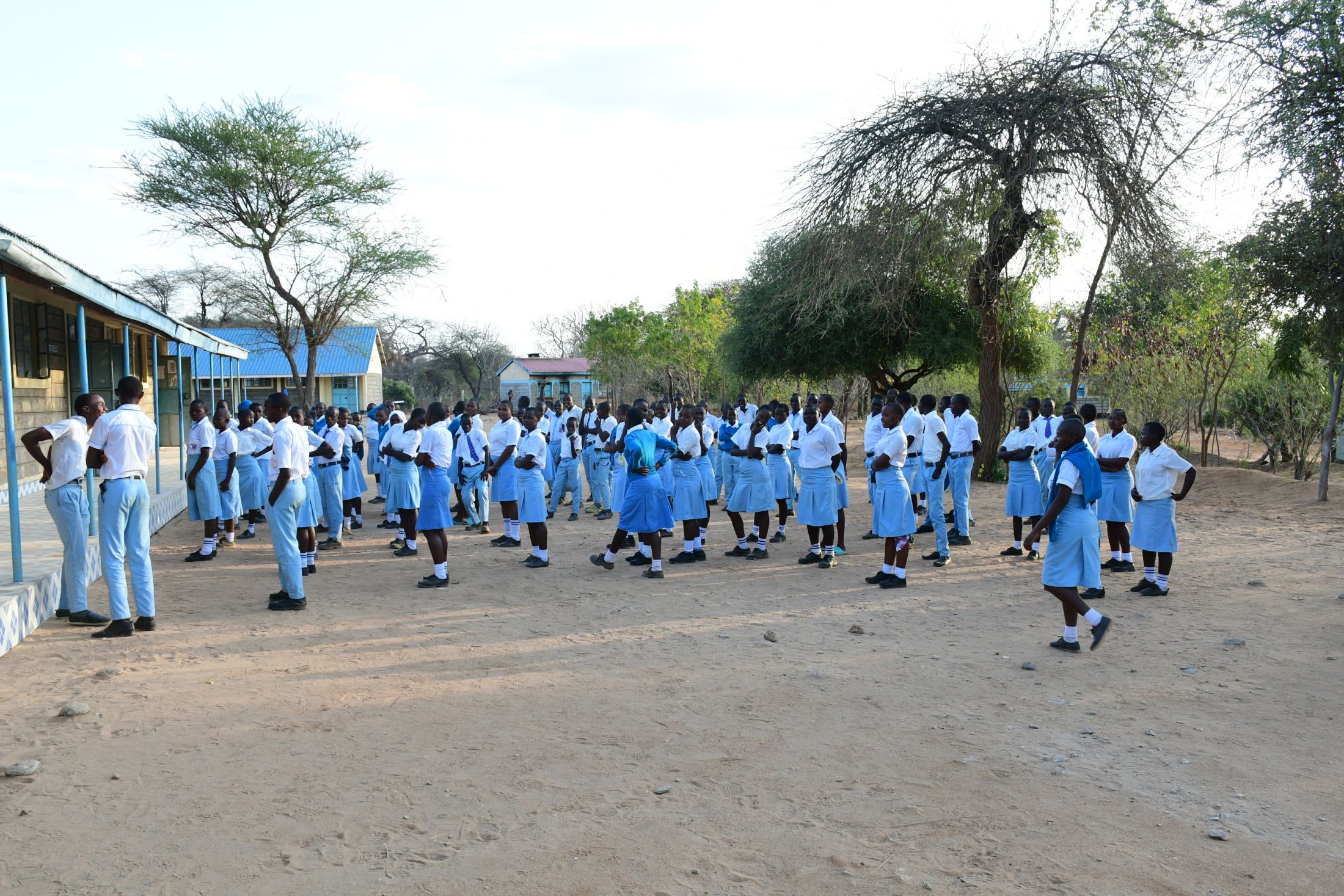At Kalanga Secondary School, 185 students and 15 staff members are stuck between a rock and a hard place. Situated in a semi-arid region of Southeastern Kenya, their small rainwater harvesting tank often runs dry. The only other option is to purchase water from a vendor, which is costly for their financial well-being and health.

Field Officer Alex Koech set the scene. "Limited water availability has resulted in disruptions in students' daily routines, such as meal delays and improper sanitation, which affects concentration and school attendance. Parents also face higher fees or contributions to cover the rising costs of water procurement, leading to economic strain. Water stored in plastic tanks for long periods may become contaminated, leading to waterborne diseases. Similarly, water transported by the bowser (water vendor) may not always meet proper health standards," he shared.
Teacher Ben Rodgers Musili, 50, feels the effects of the school's water crisis. He watches as his students suffer painful water-related illnesses.

Teacher Ben Rodgers Musili.
He shared, "Recently, one of our students fell ill after drinking water that had been stored in one of the school's plastic tanks. She complained of severe stomach cramps, diarrhea, and vomiting. Thus, she had to be taken to a nearby clinic for treatment, which disrupted the school schedule and caused anxiety among other students and staff."
"Drinking water that harms my students' health is deeply concerning and unacceptable, especially in a school environment where health and well-being should be safeguarded. When water is unsafe, it not only poses immediate health risks but also undermines the students' ability to learn, thrive, and succeed academically," Mr. Musili continued.
Without safe, accessible water, water-related illness will continue to wreak havoc on the students of Kalanga Secondary School.
"Frequent illnesses lead to students missing classes, which affects their academic progress. Teachers may also miss work due to illness, disrupting the flow of lessons and placing a burden on their colleagues. Even when students are able to attend school, the lingering effects of illness—fatigue, discomfort, and lack of concentration— negatively impact their ability to learn and participate in class," Teacher Musili shared.
Ensuring every student has enough water to meet their daily needs is almost impossible. They have to ration the water, but even then, there's often not enough for everyone.

A long line of students waits for their chance to collect water.
"Rationing and distributing water takes up significant time, pulling teachers and staff away from their primary duties, such as teaching and administrative work. This disrupts the school's daily schedule and reduces the overall time available for learning. Even with careful rationing, the water supply may not be sufficient for all the students’ needs, particularly during hot weather or periods of high demand. Staff must make difficult decisions about how to allocate the limited water, often prioritizing certain uses, like drinking or sanitation, over others," he continued.

Students in class.
The mental effects of the water crisis are just as severe as the physical ones for students and teachers. The constant stress and fear of where their water will come from, whether they will have enough, and whether it will make them sick again. Installing a 104,000-liter rainwater harvesting tank on campus will solve the shortage and provide the staff and students with safe water.
"With safe water, students would be less likely to suffer from waterborne illnesses. This would lead to better attendance, allowing students to spend more time in class and reducing gaps in learning caused by frequent absences. Knowing that safe water is readily available would reduce the stress and anxiety students may have about their health. This would create a more positive learning environment, contributing to a better mental state for learning," Teacher Musili concluded.
Steps Toward a Solution
Our technical experts worked with the local community to identify the most effective solution to their water crisis. Together, they decided to construct a rainwater harvesting system.
Rainwater Harvesting System
A rainwater collection system consists of gutters that channel rainwater effectively into large holding tanks. Attached to buildings with clean, suitable roofing, these systems are sized according to the population and rainfall patterns. Water can be stored for months, allowing for easy treatment and access. Learn more here!
Handwashing Stations
Alongside each water source, we install two gravity-fed handwashing stations, enabling everyone at the school to wash their hands. Handwashing is crucial for preventing water-related illnesses within the school and community. Student “health clubs” maintain the stations, fill them with water, and supply them with soap, which we often teach them how to make.
School Education & Ownership
Hygiene and sanitation training are integral to our water projects. Training is tailored to each school's specific needs and includes key topics such as proper water handling, improved hygiene practices, disease transmission prevention, and care of the new water point.
To ensure a lasting impact, we support forming a student health club composed of elected student representatives and a teacher. These clubs promote hygiene practices schoolwide and keep handwashing stations well-stocked. This student-led model encourages a sense of ownership and responsibility.
Safe water and improved hygiene habits foster a healthier future for the entire school.

 Rainwater Catchment
Rainwater Catchment
 Rehabilitation Project
Rehabilitation Project


















